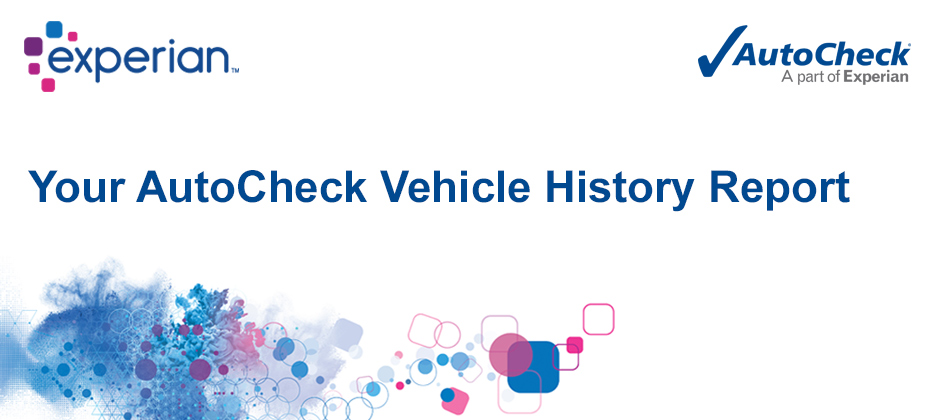
In this article…
Lorem ipsum dolor sit amet, consectetur adipiscing elit. Phasellus at nisl nunc. Sed et nunc a erat vestibulum faucibus. Sed fermentum placerat mi aliquet vulputate. In hac habitasse platea dictumst. Maecenas ante dolor, venenatis vitae neque pulvinar, gravida gravida quam. Phasellus tempor rhoncus ante, ac viverra justo scelerisque at. Sed sollicitudin elit vitae est lobortis luctus. Mauris vel ex at metus cursus vestibulum lobortis cursus quam. Donec egestas cursus ex quis molestie. Mauris vel porttitor sapien. Curabitur tempor velit nulla, in tempor enim lacinia vitae. Sed cursus nunc nec auctor aliquam. Morbi fermentum, nisl nec pulvinar dapibus, lectus justo commodo lectus, eu interdum dolor metus et risus. Vivamus bibendum dolor tellus, ut efficitur nibh porttitor nec.
Pellentesque habitant morbi tristique senectus et netus et malesuada fames ac turpis egestas. Maecenas facilisis pellentesque urna, et porta risus ornare id. Morbi augue sem, finibus quis turpis vitae, lobortis malesuada erat. Nullam vehicula rutrum urna et rutrum. Mauris convallis ac quam eget ornare. Nunc pellentesque risus dapibus nibh auctor tempor. Nulla neque tortor, feugiat in aliquet eget, tempus eget justo. Praesent vehicula aliquet tellus, ac bibendum tortor ullamcorper sit amet. Pellentesque tempus lacus eget aliquet euismod. Nam quis sapien metus. Nam eu interdum orci. Sed consequat, lectus quis interdum placerat, purus leo venenatis mi, ut ullamcorper dui lorem sit amet nunc. Donec semper suscipit quam eu blandit. Sed quis maximus metus. Nullam efficitur efficitur viverra. Curabitur egestas eu arcu in cursus.
H1
H2
H3
H4
Lorem ipsum dolor sit amet, consectetur adipiscing elit. Vestibulum dapibus ullamcorper ex, sed congue massa. Duis at fringilla nisi. Aenean eu nibh vitae quam auctor ultrices. Donec consequat mattis viverra. Morbi sed egestas ante. Vivamus ornare nulla sapien. Integer mollis semper egestas. Cras vehicula erat eu ligula commodo vestibulum. Fusce at pulvinar urna, ut iaculis eros. Pellentesque volutpat leo non dui aliquet, sagittis auctor tellus accumsan. Curabitur nibh mauris, placerat sed pulvinar in, ullamcorper non nunc. Praesent id imperdiet lorem.
H5
Curabitur id purus est. Fusce porttitor tortor ut ante volutpat egestas. Quisque imperdiet lobortis justo, ac vulputate eros imperdiet ut. Phasellus erat urna, pulvinar id turpis sit amet, aliquet dictum metus. Fusce et dapibus ipsum, at lacinia purus. Vestibulum euismod lectus quis ex porta, eget elementum elit fermentum. Sed semper convallis urna, at ultrices nibh euismod eu. Cras ultrices sem quis arcu fermentum viverra. Nullam hendrerit venenatis orci, id dictum leo elementum et. Sed mattis facilisis lectus ac laoreet. Nam a turpis mattis, egestas augue eu, faucibus ex. Integer pulvinar ut risus id auctor. Sed in mauris convallis, interdum mi non, sodales lorem. Praesent dignissim libero ligula, eu mattis nibh convallis a. Nunc pulvinar venenatis leo, ac rhoncus eros euismod sed. Quisque vulputate faucibus elit, vitae varius arcu congue et.
Ut convallis cursus dictum. In hac habitasse platea dictumst. Ut eleifend eget erat vitae tempor. Nam tempus pulvinar dui, ac auctor augue pharetra nec. Sed magna augue, interdum a gravida ac, lacinia quis erat. Pellentesque fermentum in enim at tempor. Proin suscipit, odio ut lobortis semper, est dolor maximus elit, ac fringilla lorem ex eu mauris.
- Phasellus vitae elit et dui fermentum ornare. Vestibulum non odio nec nulla accumsan feugiat nec eu nibh. Cras tincidunt sem sed lacinia mollis. Vivamus augue justo, placerat vel euismod vitae, feugiat at sapien. Maecenas sed blandit dolor. Maecenas vel mauris arcu. Morbi id ligula congue, feugiat nisl nec, vulputate purus. Nunc nec aliquet tortor. Maecenas interdum lectus a hendrerit tristique. Ut sit amet feugiat velit.
- Test
- Yes

AutoCheck® is a powerful vehicle history report that helps take the unknown out of the used car buying process, so you can confidently understand, compare, and select a vehicle that is right for you. Only AutoCheck vehicle history reports include the patented AutoCheck Score, which summarizes vehicle history data into an easy to understand ‘Score” along with an equivalent score range. The patented AutoCheck Score predicts the likelihood a car will be on the road in 5 years. It compares vehicles of similar age and class based on a scale of 1-100. The AutoCheck Score is based on a proprietary model to help you understand a vehicles predicted reliability as it pertains to age, number of owners, accidents and other vehicle history factors. Watch this video to learn more about the AutoCheck vehicle history report and how it can help you identify hidden damage and accident events to avoid costly mistakes. Contact us to learn more about becoming an AutoCheck subscriber.

For credit unions of all sizes, choosing a strategic partner with the right tools, capabilities, and industry expertise to support growth while minimizing expenses is a decision critical to the bottom line. This is especially important, since the goal of achieving sustainable growth has continued to be a trending topic for credit unions since the start of the pandemic. According to this CU Times analysis of NCUA data, the fourth quarter of 2020 showed that high overhead per assets was the main factor holding down net income, and credit unions with less than $1 billion in assets fared the worst. These high overhead costs kept margins low and served to be a key contributing factor in gauging a credit union’s profitability. Overcoming this problem lies not only in improving operational efficiency, but in seeking out partners that can provide innovative insight and “right-sized,” scalable solutions to help credit unions effectively grow at a strategic pace. The less money a credit union spends earning each dollar, the more operationally efficient and resource-savvy it becomes—which in turn generates more value for both the credit union and its members. So how can a credit union successfully assess a potential partner’s ability to help them achieve goals for sustainable growth? Asking three key questions can reveal a potential partner’s operational prowess and their ability to understand and offer the right solutions tailored for an individual credit union’s need. Minimize Overhead with a Partner Who Can Help Accelerate and Support Sustainable Growth: Evaluation Questions to Ask 1. Does my potential partner offer solutions to ease the strain on staff, or help automate time-consuming, repetitive tasks and processes? Automation is not only for large credit unions. Employees at credit unions with $4 billion and less in assets often wear many hats and manage the full spectrum of credit activities, leaving leaders to ponder how much time staff is spending on rote, manual tasks throughout the end-to-end member lifecycle. As a result, credit unions are turning to automated decisioning to streamline repetitive tasks and meet increasing member expectations, while also reducing risk. To drive sustainable growth, credit unions will want to look at current processes as a means of measuring efficiency. Can existing programs handle growth to scale in all areas of the business? How can digital lending automation be increased and free up more time for staff to focus attention where it is needed most, such as high-value engagements with members and delivering a personalized member experience? Can self-service tools save your credit union valuable time and increase employee satisfaction? 2. Does my potential partner have access to the right data, advanced analytics and technology to help optimize credit decisioning? As credit unions consider different ways to minimize overhead and accelerate growth, the last few years have shown that automation, coupled with advanced analytics and technology, has taken on a second wave of focus and intense interest. A significant opportunity pertaining to automation is supporting decisioning throughout the member lifecycle, again, eliminating the need for manual processes that cannibalize time and resources. For example, access to advanced analytics and data at the onset of account acquisition can quickly inform a lender as to whether a new account should be approved or declined. Furthermore, it also presents an opportunity to lend deeper. Credit unions can leverage expanded datasets to perform an analysis on rejected applicants and make more predictive decisions – leading to incremental loans. Additionally, lenders have identified other areas where automated decisioning could speed up processes that once required manual evaluation – from account and portfolio management, to marketing and prescreening efforts, to managing early and late-stage delinquent accounts. By leveraging a partner who can support optimizing credit decisioning with the freshest data and analytics, credit unions can routinely and consistently be sure they’re making the right offers and decisions to the right customer at the right time. 3. Does my potential partner offer digital-first strategies and solutions that help reduce friction and improve the member experience? More and more members are interacting and engaging with their credit unions via digital channels. To meet their demands, credit unions – who have historically prioritized other initiatives over digital transformation– are quickly pivoting and rethinking their digital strategy to offer best-in-class digital banking and borrowing experiences, while also reducing friction. Part of this strategy includes smart, easy and well-designed applications that support sustainable growth simply by streamlining offers and reducing abandonment. When considering a potential partner, take into consideration their ability to assist with digital-first solutions, including: Real-time income and employment verification, and fraud tools to quickly and accurately confirm important factors, including the legitimacy of members, and streamline the borrowing process with minimal friction. Instant prescreen, self-service prequalification and instant credit to offer fast, easy, and convenient real-time credit decisions for members. Additionally, improving lending economics with a digital-first pre-qualification tool can not only better serve members, but also drive more apps and grow loans. Artificial intelligence, machine learning and other innovative technologies to enhance underwriting and decrease both hard inquiries on applications and the need for extensive underwriter review. Prequalification tools powered by innovative technology solutions can lead to efficient use of underwriter resources and act as a filter in front of the LOS to remove unqualified applications from hard inquiries. Technology that integrates with multiple lending and core systems and delivers solutions that integrate with multiple systems and channels. For example, to help improve conversion, the borrower experience can be offered a simple application that is designed to “get to offer” as fast as possible. This helps reduce abandonment. The process can be further streamlined by integrating data sources for ID verification, auto fill assistance and adding integrations with existing lending and core systems. To learn more about Experian and how our solutions can support and grow your credit union, contact us now. Contact Us

Forrester recently named Experian to their Programs of the Year awards, which recognize outstanding achievements in a particular area in sales, marketing and product functions. Forrester gives this award to companies who achieve the successful implementation of Forrester’s research, frameworks and best practices to improve functional performance. At Experian, innovation is at the heart of what we do. We strive for continuous improvement, and look for ways to progress our products and services to better serve businesses and consumers. Over the last year, Experian’s Decision Analytics Portfolio Marketing team engaged with Forrester’s SiriusDecisions group to refine the programs they employ to assess and respond to market needs while meeting their stated growth and performance goals. Experian’s Keir Breitenfeld, Vice President, Portfolio Marketing, Experian Decision Analytics, who presented the team’s results at the recent Forrester B2B summit said, “I’m proud of the Decision Analytics Portfolio Marketing team for what they accomplished while working alongside Forrester SiriusDecisions. We were able to reframe how we assess market opportunities for increased impact as we highlight Experian’s areas of expertise to better serve businesses and the consumers that rely on them.” To learn more about the Programs of the Year award and how Experian innovation helps businesses achieve their goals, visit us or request a call. Contact us


